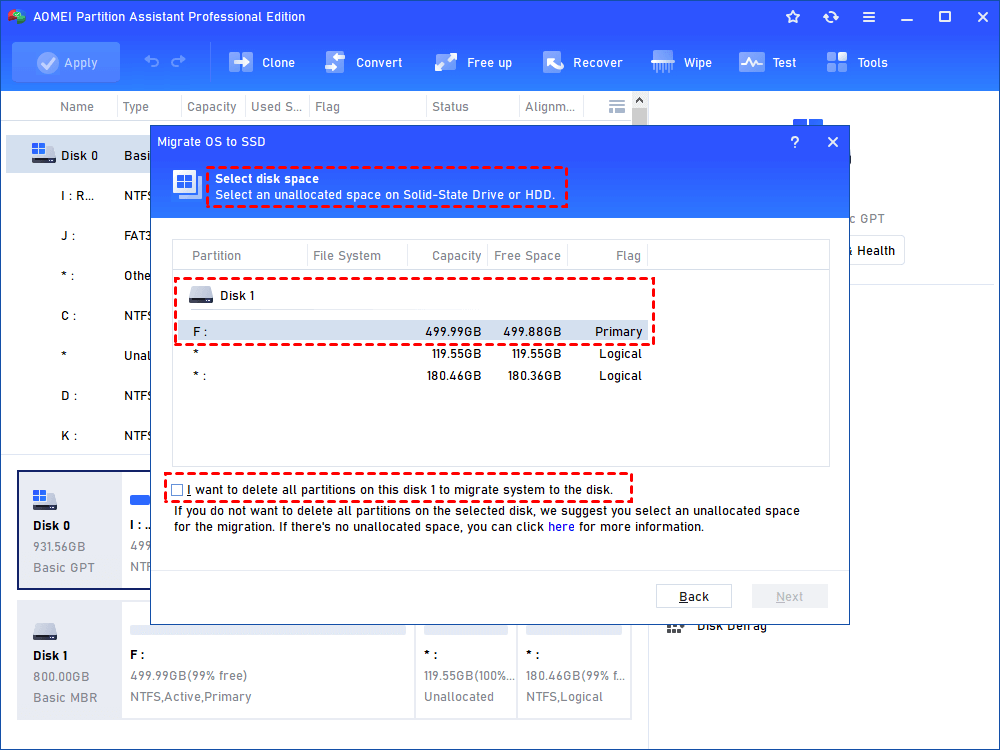


- #HOW INSTALL EASY TO BOOT IN SECONF PARTITION OF SSD UPDATE#
- #HOW INSTALL EASY TO BOOT IN SECONF PARTITION OF SSD FULL#
- #HOW INSTALL EASY TO BOOT IN SECONF PARTITION OF SSD WINDOWS 10#
- #HOW INSTALL EASY TO BOOT IN SECONF PARTITION OF SSD DOWNLOAD#
- #HOW INSTALL EASY TO BOOT IN SECONF PARTITION OF SSD WINDOWS#
 Check the disk pre-requisites (including required space to store GPTs) in the following Microsoft* article: Disk Prerequisites. In the BIOS setup. (You should see options for UEFI boot.) Confirm with your computer manufacturer for support.
Check the disk pre-requisites (including required space to store GPTs) in the following Microsoft* article: Disk Prerequisites. In the BIOS setup. (You should see options for UEFI boot.) Confirm with your computer manufacturer for support. 
#HOW INSTALL EASY TO BOOT IN SECONF PARTITION OF SSD UPDATE#
Windows 10 Creators Update 圆4 (Version 1703, Build 3) or later.Here you can confirm the Partition style.Ĭonvert partition table from MBR to GPT with MBR2GPT.exe.Right-click the disk shown as ( Disk x, Basic, Capacity, Online ) on the left (Where it says Disk 0 as shown in the image above).Locate your primary system boot partition.
#HOW INSTALL EASY TO BOOT IN SECONF PARTITION OF SSD WINDOWS#
For Windows 10, press the Windows key and the X key simultaneously, then click Disk Manager. Once created, this bootable recovery USB can optionally be substituted for the system repair disc in the steps below.Ĭonfirm that Windows is installed to an MBR partition
Create a backup of your recovery partition on a USB device. Some of these steps need to be performed while your OS isn't active. #HOW INSTALL EASY TO BOOT IN SECONF PARTITION OF SSD DOWNLOAD#
Download these steps to another computer or print them out.
#HOW INSTALL EASY TO BOOT IN SECONF PARTITION OF SSD FULL#
If you have a second disk drive with enough available capacity, you can create a system image and recover the full installation as it was before you started this procedure. We highly recommended performing a backup of your data.With Windows® 10 Creators Update 圆4 (Version 1703, Build 3) or later, there's an option to convert the partition table from within Windows. Reinstall your operating system from a UEFI OS image with UEFI enabled in the BIOS.If you want to convert your current partition table from MBR to GPT, we recommend you:
#HOW INSTALL EASY TO BOOT IN SECONF PARTITION OF SSD WINDOWS 10#
The Windows 10 operating system was designed to install with the UEFI (Unified Extensible Firmware Interface) boot option and the resulting drive partition table GUID Partition Table (GPT). You may lose some support with the MBR partition table on Windows 10, such as system acceleration with Intel® Optane™ memory.
If you recently installed the operating system and the BIOS was set to CSM, setting the legacy boot option in the legacy boot media partition. If you recently installed the operating system, setting the legacy boot option in the BIOS. After upgrading to Windows® 10 from an older operating system (OS) version, such as Windows 7* or Windows 8.1*. You might have the legacy boot option set in the BIOS: If you are accelerating the system disk (OS Installed) proceed with details below. Right-click left panel for the Disk being checked (for example Disk 0, Disk 1, and others) > Properties > Volumes. Open Disk Management by pressing Windows key + R > select Disk Management. If the drive is a secondary/data drive (no OS installed), you can use third-party applications such as EaseUS* to convert from MBR to GPT. If you have the legacy boot option set in the BIOS (Basic Input/Output System), it's possible the drive partition table is Master Boot Record (MBR). This article describes methods to convert SSDs from MBR (Master Boot Record) to GPT (GUID Partition Table) partition structure. We don't offer support for third-party tools. We don't endorse the content, products, or services offered. Links provided to third-party tools and sites are for your convenience. Before proceeding, we recommend backing up all data. To prolong your SSD's life, store documents, media and other files on a large HDD storage volume. The drawback of using as SSD is that, after writing and deleting data 10,000 to 100,000 times, the flash memory deteriorates and no longer stores data. SSDs access data instantly, eliminating the several seconds or minutes an HDD takes to move its mechanical arm over a platter looking for data blocks that become fragmented when the disk spins. Trim is a special command that your OS sends to your SSD to make up for the difference in how SSDs and HDDs treat data. Instead, Windows automatically enables a feature called Trim that optimizes SSD performance. Since it's an SSD, Windows knows not to defragment it, which shortens its lifespan by superfluously writing and erasing bytes. The applet displays Solid State Drive next to the drive letter, now that Windows recognizes it as an AHCI device. After booting back into Windows on the SSD, open Defragment and Optimize Your Drives, then select your SSD from the menu.








 0 kommentar(er)
0 kommentar(er)
